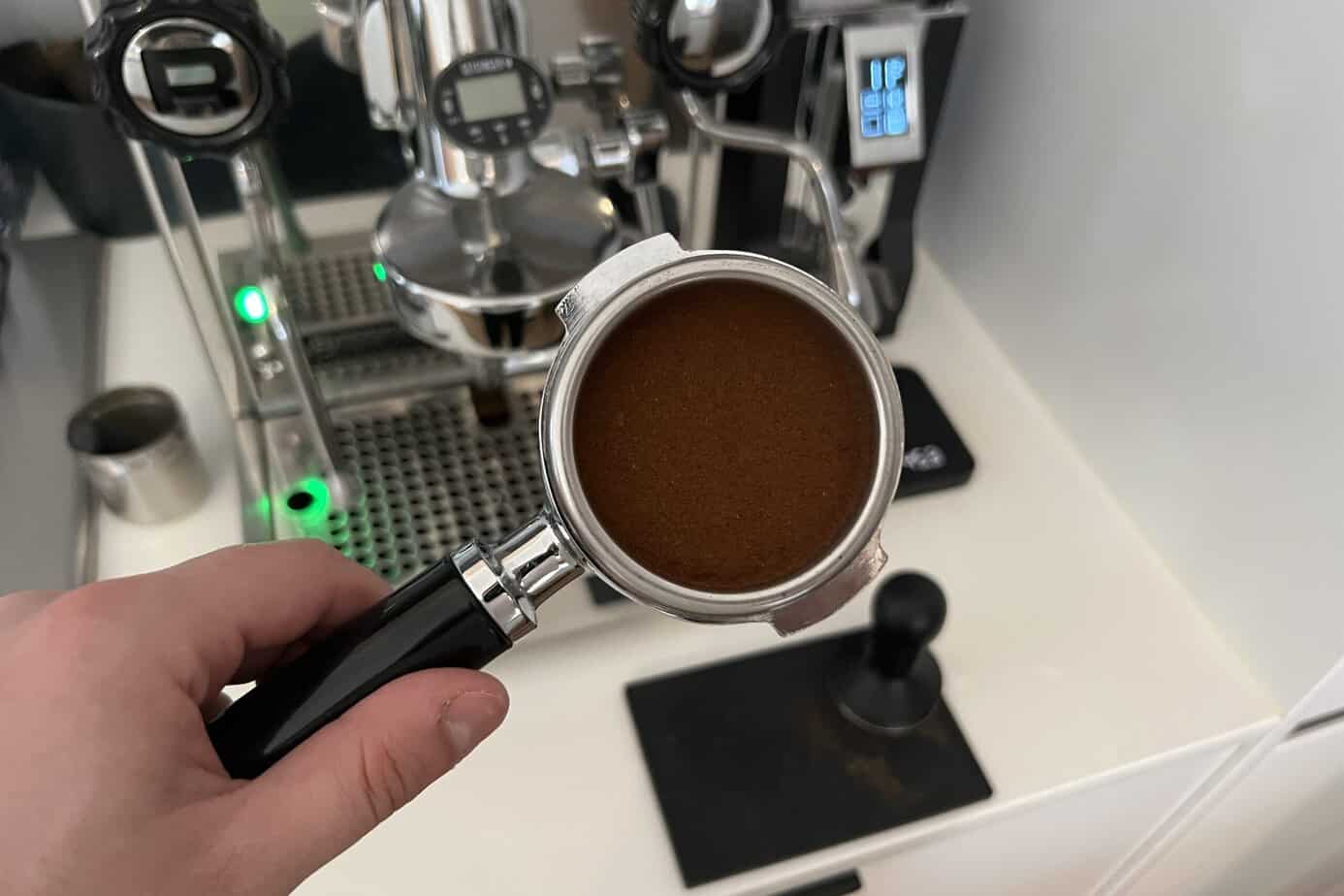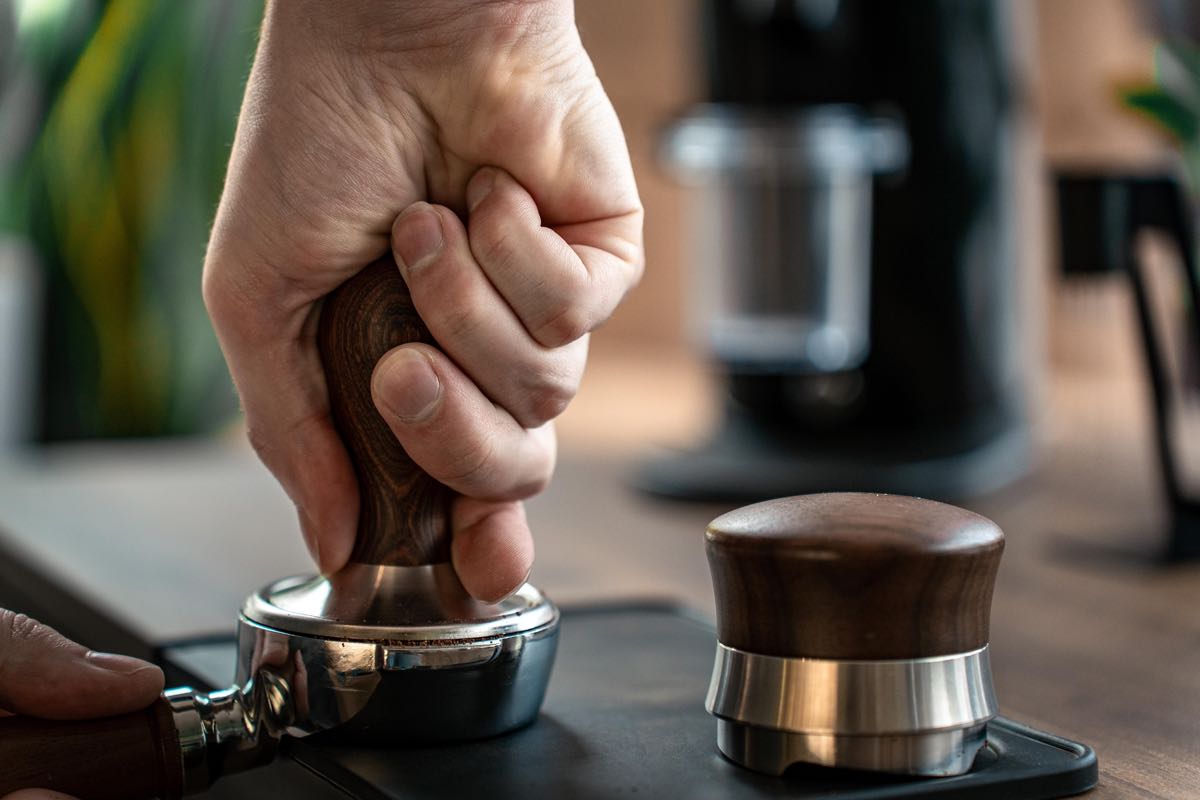Making espresso at home requires both artistry and precision. One of the most debated aspects of this process is tamping—specifically, how much pressure you should apply to the coffee grounds before brewing. For home baristas, mastering tamping is key to pulling a perfect shot of espresso. The quality of your espresso shot—whether under-extracted, over-extracted, or just right—largely depends on your tamping technique. Let’s break it down and explore the ideal approach. Explore the features and performance of this machine in our Philips 5500 LatteGo review
Why Is Tamping Important?
Tamping compresses the coffee grounds into a compact, even layer, ensuring water flows uniformly during extraction. Proper tamping eliminates air pockets, preventing “channeling,” which occurs when water finds an easy path through the grounds. Channeling results in uneven extraction, producing a weak and inconsistent shot. Dive into the details of the Philips 5400 LatteGo review
By tamping correctly, you ensure water flows evenly through the coffee, drawing out rich and complex flavors. Without tamping, water rushes through too quickly, under-extracting the grounds and leaving you with a sour and thin espresso. Compare these two models in our Philips LatteGo 5400 vs 4300 review
How Much Pressure is Ideal?
The general guideline is to apply around 30 pounds (13.6 kg) of force when tamping. However, for home baristas, the key is less about exact pressure and more about consistency. Discover the differences between these machines in our Philips 3200 vs 4300 vs 5400 review
The goal is to press firmly enough to compress the grounds until they no longer move under the tamper. Once the coffee bed is compact and level, additional pressure doesn’t improve the shot—it may even cause over-extraction, leading to bitterness. Learn how these two models compare in our Philips 3200 vs 4300 review
Rather than focusing on exact pressure, concentrate on keeping the tamper level while applying steady, even force. When the grounds feel firm and resist further movement, you’re ready to brew your espresso. Uncover the key distinctions in our Philips 3200 vs 5400 review

Steps for Consistent Tamping
Achieving consistent tamping every time you brew espresso at home involves following these steps:
Distribute Coffee Grounds Evenly
Ensure the coffee grounds are evenly spread in the portafilter before tamping. Uneven distribution leads to uneven tamping, which can cause channeling. You can use a coffee distribution tool or tap the sides of the portafilter to level the grounds. Learn everything about this innovative coffee machine in our DeLonghi Eletta Explore Espresso Machine with Cold Brew review
Hold the Tamper Correctly
Grip the tamper with a straight wrist and keep your elbow at a 90-degree angle. This helps apply even pressure without straining your arm. Use three fingers to grip the handle, while your thumb and index finger ensure the tamper stays level with the portafilter. Dive into the features and performance in our DeLonghi Dinamica Automatic Coffee & Espresso Machine review
Apply Steady Pressure
Press down evenly until the grounds stop shifting, often referred to as “tamping until resistance.” Once the coffee bed feels firm under the tamper, you’ve applied enough pressure. Pressing harder won’t improve the shot and can lead to over-extraction. Explore the versatility of this model in our DeLonghi Magnifica Evo Espresso Machine with Frother review
Don’t Fixate on Pressure Amount
Although 30 pounds of pressure is often suggested, the primary goal is to create a firm, even coffee bed. Consistency is more important than hitting a specific pressure target. Discover the benefits and features of this machine in our DeLonghi Magnifica Evo review

Use a Stable Tamping Surface
Tamping on a stable surface like a tamping mat ensures the tamper stays level and protects your counter. A solid base helps you maintain even pressure and prevents mistakes. Find out why this model stands out in our DeLonghi Magnifica S review
Common Tamping Mistakes to Avoid
When perfecting your tamping technique, avoid these common mistakes:
Uneven Tamping
If your tamper isn’t level, one side of the coffee bed will be higher, leading to uneven extraction. This can cause parts of the espresso to be under-extracted while other parts are over-extracted, resulting in an imbalanced shot.
Too Much or Too Little Pressure
Excessive pressure compresses the grounds too tightly, leading to over-extraction and bitterness. Too little pressure results in a loose coffee bed, causing a weak, under-extracted shot. Aim for balance by tamping until the grounds feel firm but not overly packed.
Skipping Grounds Distribution
Failing to evenly distribute the coffee grounds before tamping leads to channeling and inconsistent shots. Always ensure the grounds are level before applying the tamper.
Tools to Improve Tamping
To enhance your espresso shots, consider using tools designed for consistency. Coffee distribution tools, such as a coffee leveler or a WDT (Weiss Distribution Technique) tool, help evenly distribute the grounds before tamping, preventing clumping and channeling.
For added precision, tampers with pressure sensors can help ensure you apply consistent force each time. These tools are especially useful for beginners looking to refine their tamping technique.
Conclusion: Practice for Perfection
Tamping isn’t about achieving an exact pressure but about maintaining a consistent technique. Focus on distributing the grounds evenly, applying steady force, and creating a firm, level coffee bed. With practice, you’ll develop a feel for when the grounds are properly compressed, leading to better espresso shots at home.
Rather than worrying about specific numbers, enjoy the process, practice regularly, and soon you’ll be pulling delicious espresso shots with ease. For further guidance and tips, check out expert advice from resources like Brewing with Dani to continue improving your espresso skills!
